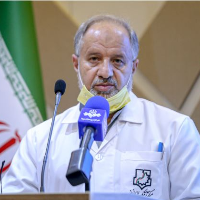Investigation of Inherited Causes of Autosomal Recessive Non-syndromic Epilepsy in an Iranian Family Using Whole Exome Sequencing Method
Author(s):
Abstract:
Background
The cause of epilepsy in most of cases is unknown but inherited causes can play a role in its incidence. Recently, many researches have been conducted in the field of epilepsy. The aim of this study was to identify gene(s) responsible in an Iranian family with autosomal recessive non-syndromic epilepsy using whole exome sequencing (WES) method.Methods
In this experimental study, genomic DNA was extracted from whole blood belonging to three affected persons and a healthy individual and whole exome sequencing was performed using Illumina Hiseq2000 platform. At first, variants classification were carried out based on mutation types, position of the mutation and their allele frequencies and then, prioritization was performed via two approaches. Sanger sequencing was carried out for RNF216 confirming the variant [NM_207111.3 (RNF216): (g.5780794G > A), (c.854C > T)].Findings: From 130855 variants, 85% were single nucleotide variants and 15% were indels. One third of them located in intergenic and intronic regions, one third located in 3and 5 UTRs and one third located in exonic and splice site regions. 3.8% and 3.4% of variants had allele frequencies below 0.01 in ExAC and 1000 genome project databases, respectively. By using the two prioritization approaches, a variant in RNF216 gene [NM_207111.3 (RNF216): (g.5780794G > A), (c.854C > T)] was selected as a prior candidate. However, this variant did not co-segregate with the disease in all of the members of this family.
Conclusion
Exome sequencing has been considered as a tool for studying genetic causes of Mendelian disorders; but it has some limitations. Mutation in the non-coding regions of the genome, clinical heterogeneity of disease, wrong clinical diagnosis, phenocopy, and technical and analytical limitations can be considered as a reason that we could not find gene(s) responsible for the disease in this family.Keywords:
Language:
Persian
Published:
Journal Of Isfahan Medical School, Volume:34 Issue: 407, 2017
Pages:
1362 to 1368
https://magiran.com/p1647967
مقالات دیگری از این نویسنده (گان)
-
Evaluation of Changes in miR-20a Expression Changes in War Wounded Exposed to Mustard Gas
Mohadese Valizadeh, Masoud Soleimani, Shiva Irani, Mahmood Tavallaei *
Journal of Animal Biology, -
Isolation, Culture, Optimization and Validation of Human Corneal Stromal Keratocytes from Discarded Corneal Tissue
Mohsen Ghiasi, Mehrdad Hashemi, Ali Salimi, Mahmood Tavallaie, Hossein Aghamollaei *
Journal of Applied Biotechnology Reports, Winter 2023



